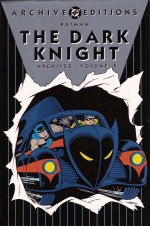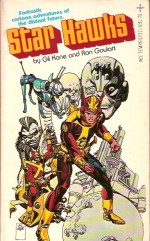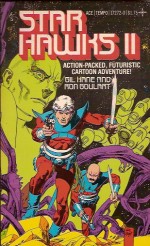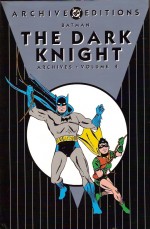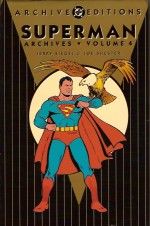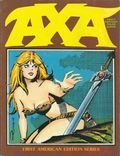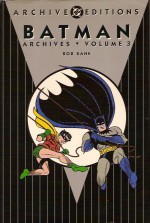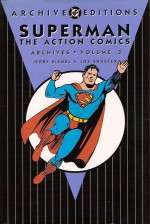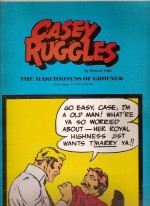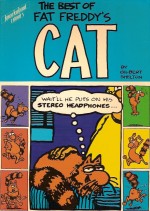
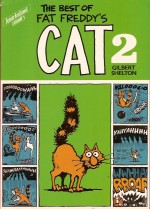
By Gilbert Shelton with Dave Sheridan, Paul Mavrides & Lieuen Adkins (Knockabout)
ISBN: 0-86166-009-9 & 0-86166-014-5Â Â Omnibus 978-0-86166-161-9
The Fabulous Furry Freak Brothers shambled out of the Underground Commix counter-culture wave in 1968; initially appearing in Berkeley Print Mint’s Feds ‘n’ Heads, and in Underground newspapers before creator Gilbert Shelton and a few friends founded their own San Francisco based Rip Off Press in 1969. This effective collective continued to maximise the madness as the hilarious antics of the “Freaks†(contemporary term for lazy, dirty, drug-taking hippy folk) captured the imagination of the more open-minded portions of America and the world (not to mention their kids)…
In 1971 Rip Off published the first compilation: The Collected Adventures of the Fabulous Furry Freak Brothers – which has been in print all around the planet ever since – and soon assorted underground magazines and college papers were joined by the heady likes of Rip Off Comix, High Times, Playboy and numerous foreign periodicals in featuring the addictive adventures of Freewheelin’ Franklin, Phineas T. Freakears and Fat Freddy Freekowtski (with his cat): simpatico metaphorical siblings in sybaritic self-indulgence.
Fat Freddy’s Cat quickly became a star in his own right: tiny “topper†strips (separate mini adventures which accompanied the main story) in the newspapers that supplemented the Freaks’ antics became single page gags and eventually bloomed during the 1970s into full-blown extended exploits of the canny, cynical feline reprobate in his own series of digest-sized comicbooks The Adventures of Fat Freddy’s CAT…
Much of the material consisted of untitled quickies and short strips concocted by Shelton (with assistance from Dave Sheridan, Paul Mavrides and Lieuen Adkins) and eventually the little yarns were collected by UK Publisher Knockabout as a brace of oversized – 297x212mm – black and white comic albums and as mass-market b-format paperbacks in their Crack Editions imprint. In 2009 the entire canon was collected as The Fat Freddy’s CAT Omnibus.
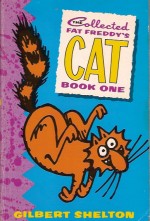
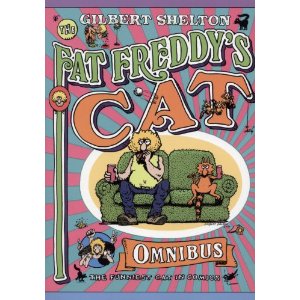
These tales are wicked, degenerate, scatologically vulgar, sublimely smutty and brilliantly funny in any format but perhaps their raw anarchic, sly hysteria is best enjoyed in the giant tomes I’m highlighting here.
Book one opens with a dozen or so six panel strips and a single pager produced between 1971 and 1978, before the hilariously whacky epic ‘Chariot of the Globs’ (written by Adkins with art by Shelton & Sheridan) reveals how the imperturbable puss saved alien explorers from a hideous fate, followed by another fifty shorts covering every topic from mating to feeding, talking to humans and especially how cats inflict revenge…
Shelton and Sheridan then disclose the horrors of ‘Animal Camp’ wherein the irrepressible feline was dumped by Fat Freddy in a Boarding Kennel run by Nazi war criminals where pets were converted into clothing and pet food or else used in arcane genetic experiments!
Naturally the brainy beast had to lead a rebellion and break-out…
Amidst the remaining sixty-plus shorts comprising talking cockroaches, drug-fuelled excess, toilet training and drinking, fighting, mating and outsmarting humans, lurks one last lengthy treat from 1980, ‘The Sacred Sands of Pootweet… or the Mayor’s Meower’, a splendidly raucous political satire based on the tale of Dick Whittington.
When a religious hard-liner overthrows the oil-rich nation and former US satellite of Pootweet, Fat Freddy attempts to scam the Supreme Hoochy-Coochy by using the cat to clean up kingdom’s rodent problem. Only trouble is that the pious and poor Pootweet populace have no vermin problem (even after Freddy callously tries to manufacture one), only sacred, unblemished, undesecrated sands which the cat – in dire need of a potty-break – heads straight for…
The second volume is blessed with another seventy-odd scurrilous, scandalous and supremely hilarious short gags ranging from half to two pages, intoxicatingly interlaced with longer comedic classics such as the untitled tirade against modern newspaper strips which “guest-stars†such luminaries as Mary Worth, Doonesbury, Kronk, Andy Capp, Peanuts and a heavenly host of cartoon cats from Garfield to Fritz to Felix…
Also included are the devious and satirical 1973 spy-spoof ‘I Led Nine Lives!’ recounting the days when the fabulous feline worked for the FBI, ‘Fat Freddy’s CAT in the Burning of Hollywood’ from 1978 wherein the sublimely smug and sanguine survivor of a million hairy moments regales his ever-burgeoning brood of impressionable kittens with how he and his imbecilic human spectacularly flamed out in the movie biz and a truly salutary tale for all fans and readers…
Following the innocent – but so enjoyable – shredding of Fat Freddy’s comic collection and the expiration of his ninth life, ‘Paradise Revisited’ (1983 and illustrated by Paul Mavrides) finds the Marvellous Moggy in heaven again: but even though the place is packed with famous felines it’s not all catnip and celebration…
Despite the hippy-dippy antecedents and stoner presentiments, Shelton is always a consummate professional. His ideas are enchantingly fresh yet timeless, the dialogue is permanently spot-on and his pacing perfect. The stories, whether half-page quickies, short vignettes or full blown sagas, start strong and relentlessly build to spectacular – and often wildly outrageous, hallucinogenic yet story-appropriate – climaxes.
Anarchically sardonic and splendidly ludicrous, the madcap slapstick and sly satire of Gilbert Shelton is always an irresistible, riotously innocent tonic for the blues and these tales should be a compulsory experience for any fan of the comics medium.
© 1983, 1984, 2009 Gilbert Shelton. All rights reserved.

